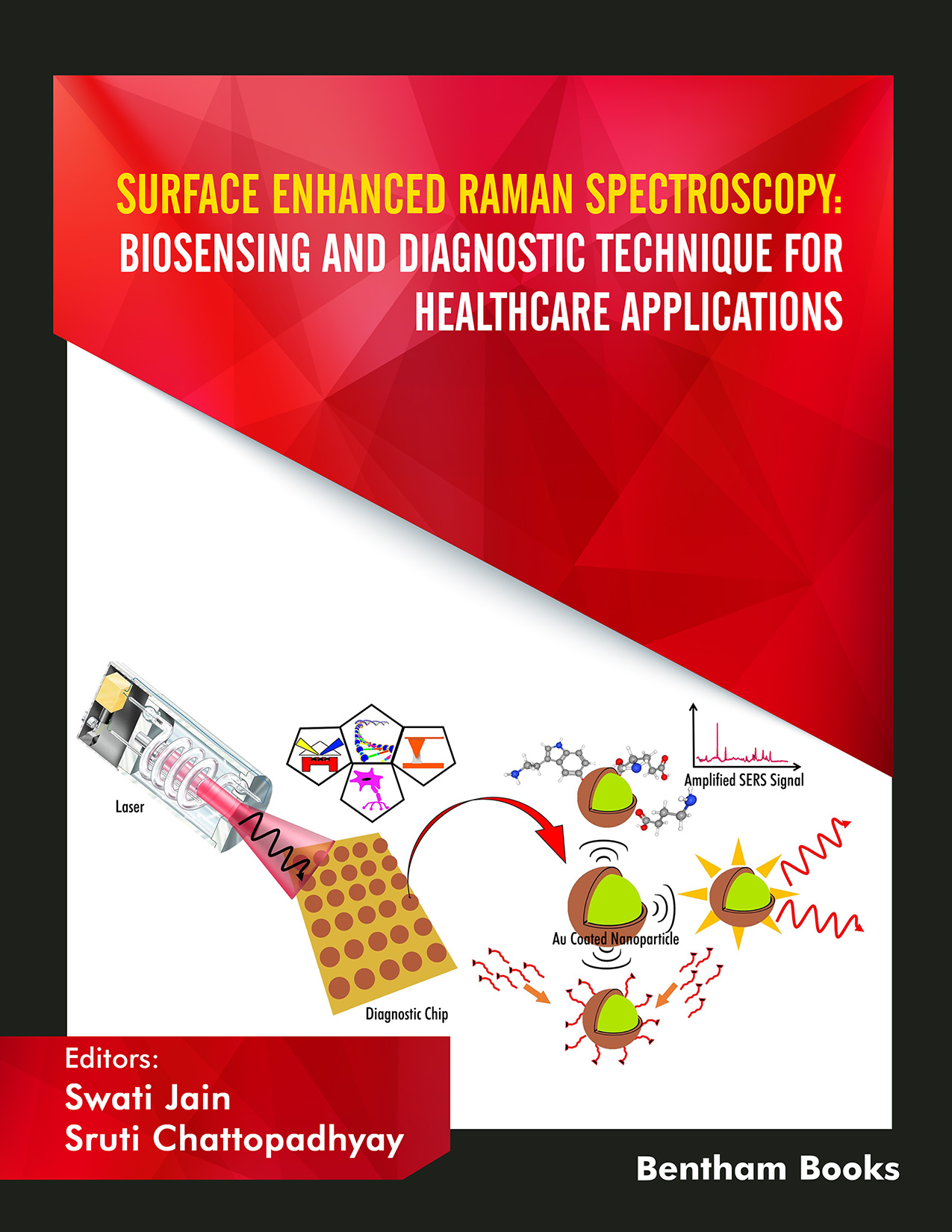Million-fold enhancement of characteristic Raman signal of molecules presented as a monolayer on the surface of rough nanostructured metals refuelled the interest in Raman spectroscopy which initially was reserved for pure sample analysis. The amplification in signal now referred to as surface enhanced Raman spectroscopy (SERS) has been explored for numerous applications in physical, analytical, chemical, material, surface/topographical and biomedical sciences. The aim of this book is to comprehensively understand the concept of biological applications using SERS technique for sensing and imaging various analytes in in-vitro as well as in-vivo conditions.
Individual bonds in molecules give rise to unique vibrations by inelastic scattering resulting in molecularly specific spectra, namely Raman spectra. These inherently weak signals were later on developed by researchers into highly intense peaks using metallic nanostructures and this SERS phenomenon gained popularity, particularly in healthcare and medical applications. SERS offers high sensitivity, fingerprint analysis, optimization towards near infra-red signal, minimization of photo-bleaching and photo-degradation.
Nowadays, dramatic emphasis is devoted towards rapid and sensitive detection methodologies as well as gaining insight into molecular dynamics in in-vivo conditions through imaging. SERS based nanomaterials and devices, including novel plasmonic and non-plasmonic nanostructures and the development of stable Raman Reporter Molecules (RRMs) have propelled amended signalling attributes in SERS biosensing and diagnostic procedures. The instrument design has also changed focus towards SERS hand-held devices, smart phone integration and point-care-devices applicable in remote and intermittent sensing of target analytes.
Clearly, the time for a book is appropriate that summarizes basic notions and trends about thinking of SERS as a device for bioanalytical and biosensing tool defining what we know and understanding the deficiency in the technique in a way to harness this understanding into opportunities for the betterment of SERS and its biological applications. This is our ambition for assembling this e-book. International researchers in their respective sub-fields of SERS have contributed to this book. Their diverse background and training ranging from physics to inorganic chemistry to biomedical engineering, in my opinion, directly reflects the justification towards the multidisciplinary nature of SERS and its biological applications. The e-book is intended as a reference book for researchers and academicians working in SERS. It will also provide comprehensive concepts to newcomers starting to work in this field irrespective of their background in a simple manner.
Updated and recent analysis of materials and processes are detailed, all in context with SERS spectroscopy and its applicability in biomedical and healthcare fields. The book is planned in a hierarchical scale with discussions on theoretical beginnings of Raman and SERS spectroscopy moving towards chemical structures in SERS. Hence, the selection of topics covered in the preceding 8 chapters is highly subjective. The e-book is categorically differentiated into specific sections, each containing chapters catering to various aspects of SERS technique and biosensing applications. The sections move from basic physics of Raman spectroscopy and SERS towards plasmonic colloids and rough metal nanostructures, highlighting their synthesis as well as advancement in nano-assemblies. This includes active nanomaterials and nanodevices, including plasmonic and non-plasmonic nanostructures as well as Raman Reporter Molecules (RRMs). The largest section is, however, reserved for biosensing and diagnostic applications of SERS in biology and medicine. We have also put efforts towards understanding the concept of SERS for ultimately gaining perspective in developing an improvised biosensing system in a clinical setting. The book covers all, from basic knowledge to new exciting research and development in the field of SERS and its application for biosensing, diagnostics and imaging techniques.
Lastly, this book also summarizes lacunae of SERS technique, highlighting the need for optimization of signal acquisition parameters to prepare commercially viable and field deployable instruments. Remedial measures adopted for developing biosensing methodologies are also discussed with improved versions of SERS coming to the fore.
We cordially thank all our authors for their hard work and commitment to this book that they have invested in, writing highly relevant as well as excellent chapters. This international project would not have been possible without their efforts and dedication. We thank Ms. Humaira Hashmi at Bentham Publications, who suggested initiating this project to edit this SERS based e-Book. Finally, Dr. Swati Jain and Dr. Sruti are extremely thankful and grateful to their families for the continual support and motivation. We have tremendous faith that this e-book has the potential to stimulate thought processes leading to in-depth understanding of SERS so as to fully exploit this technique in innumerable biological applications.
Swati Jain
Amity Institute of Nanotechnology
Amity University
Noida, UP
India
Department of Science & Technology
Technology Bhawan
New Mehrauli Road
New Delhi, India
Sruti Chattopadhyay
Center for Biomedical Engineering
Indian Institute of Technology Delhi
New Delhi, India

